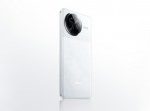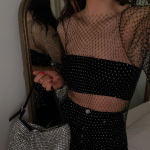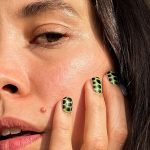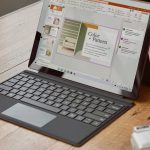Justin Sullivan/Getty Images
- Theranos founder Elizabeth Holmes finished seven days of testimony this week in her fraud trial.
- She said she wasn’t told the lab posed “immediate jeopardy” to patients.
- She recalled trying not to “ignite” Ramesh Balwani, whom she says showed up at her church after they split.
Lab trouble
Holmes testified this week that she knew around September 2015 that Theranos’ inspection by the Centers for Medicare & Medicaid Services was going poorly. She said she didn’t recall being told the lab posed “immediate jeopardy” to patient health, according to The Verge.
Holmes said she had believed Theranos’ lab was “excellent,” and Ramesh “Sunny” Balwani, who is her ex-boyfriend and Theranos’ former president and COO, had told her it was world-class. She said Theranos disclosed its use of modified third-party devices to its board of directors, the FDA, and the CMS.
Holmes denied acting to hide Theranos’ use of venous draws from potential investors. However, an email sent in preparation for potential investors showed her brother, Christian, who worked in product management at Theranos, writing, “Assumptions here from EAH [Elizabeth Anne Holmes] that we must not do venous draws, and we cannot tell them their order prompts venous if it does.”
Theranos’ use of third-party devices
Holmes testified that she knew between 2010 and 2014 Theranos had purchased third-party analyzers and was using them for tests; the goal was to only use Theranos’ miniLab exclusively even though that hadn’t yet happened by 2014, she said.
Holmes said the HIV test that previous witness and Theranos patient Erin Tompkins took, for which she received a false positive result, had run on a commercial device, not a proprietary Theranos one, according to The Wall Street Journal.
Holmes admitted she never told journalist Roger Parloff, who wrote a glowing Fortune article on Theranos, that the company was using third-party devices.
“I think I could have handled the communications differently,” she said. Holmes pointed out several inaccuracies in the piece, including reporting that Theranos didn’t use third-party analyzers and that it offered more than 200 tests without the need for a syringe.
Trade secrets
Jurors heard Theranos’ trade secret policy, which Holmes has frequently leaned on while testifying as rationale for some of her actions.
“We had a huge amount of invention that was happening in our laboratories,” Holmes said. “We had teams of scientists and engineers that were working really hard on coming up with new ideas for patents and trade secrets, and we needed to figure out how to protect them.”
Holmes has said she didn’t tell Walgreens about Theranos’ use of third-party machines because the modifications the company made to such machines were trade secrets, according to CNN. Prosecutors got her to acknowledge that, despite such trade secret concerns, Theranos sent devices to Walgreens to review, trusting the company not to reverse-engineer them.
Holmes tried not to “ignite” Balwani
The prosecution brought up Holmes’ texts with Balwani, including the fact that she often seemed to repeat messages he sent. Holmes said she did this because Balwani often vented over text and she tried “not to ignite him” by repeating things he said to be supportive and show she was listening, according to CNBC. Balwani took a more active role in the lab around November 2014, when former lab director Adam Rosendorff left Theranos. Holmes said Balwani was the most important advisor to her as CEO and that after their break-up, which she called “a process,” he’d show up at her church and a place she frequently went running.
Holmes pitched what Theranos could be
“There were people that were long-term investors and I wanted to talk about what this company could do a year from now, five years from now, 10 years from now,” Holmes testified, according to NBC News.
Jurors saw slides prepared by late Theranos employee Ian Gibbons that Holmes has said influenced her understanding of Theranos’ testing abilities. Holmes acknowledged, as prosecutors elicited, that the company only had prototypes of its 4.0 series by that point and that Gibbons’ presentation spoke to what Theranos might one day achieve, not what it could do at the time.
Holmes acknowledged she knew investors lost money but said she didn’t mislead them about Theranos.
Shortly after, the defense rested its case. Closing arguments begin Thursday.
Powered by WPeMatico






